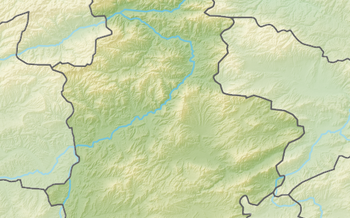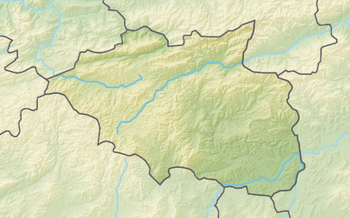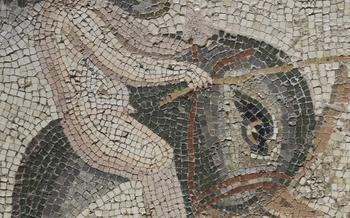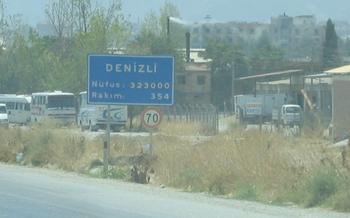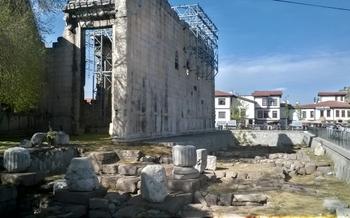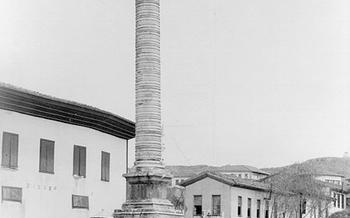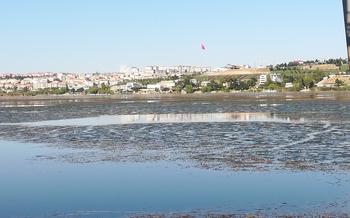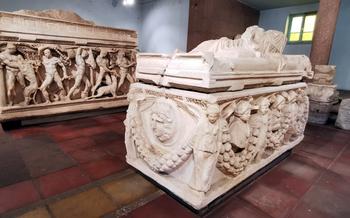
Roman Bath Ruins in Sarıkaya
- History of the Roman Bath Ruins in Sarıkaya
- Location and Accessibility
- Architectural Features
- Preservation and Restoration Efforts
- Unique Features
- Interactive Displays and Exhibitions
- Surrounding Attractions
- Local Cuisine and Restaurants
- Accommodation Options
- Shopping and Souvenirs
- Visitor Etiquette and Guidelines
- Photography and Social Media
- Safety and Security
History of the Roman Bath Ruins in Sarıkaya
The Roman bath ruins in Sarıkaya, Turkey, stand as a testament to the enduring legacy of the Roman Empire and the enduring influence of ancient Roman culture. Constructed during the 2nd century AD, these impressive ruins offer a glimpse into the bathing practices, social customs, and architectural prowess of the Roman civilization.
The baths were an integral part of ancient Roman society, serving as a place for cleansing, relaxation, and social interaction. They were built throughout the empire, often as part of larger complexes that included gymnasiums, libraries, and temples. The baths in Sarıkaya are particularly well-preserved and provide valuable insights into the lives of the people who lived here centuries ago.
The architectural style of the Roman baths in Sarıkaya is a blend of Eastern and Western influences. The complex features vaulted ceilings, marble columns, and intricate mosaics, showcasing the Romans' mastery of construction techniques. The baths were also equipped with a sophisticated heating system that circulated hot air through the walls and floors, ensuring a comfortable bathing experience even in the cold winter months.
Historical anecdotes and legends abound surrounding the Roman bath ruins in Sarıkaya. According to local folklore, the baths were once frequented by a beautiful princess who possessed magical powers. It is said that the princess used the waters of the baths to heal the sick and injured, earning her the respect and admiration of the local people.
Whether fact or fiction, these stories add to the allure of the Roman bath ruins in Sarıkaya and make them a captivating destination for history buffs and travelers alike.
Location and Accessibility
The Roman Bath Ruins in Sarıkaya are located in the town of Sarıkaya, which is situated in the Yozgat Province of central Turkey. The ruins are easily accessible by road, with several transportation options available for travelers. To reach Sarıkaya, visitors can take a bus from major cities like Ankara or Kayseri, which offer regular and convenient services. Once in Sarıkaya, the Roman Bath Ruins are just a short walk from the town center, making them easily accessible on foot. For those who prefer a more personalized experience, guided tours are also available, providing visitors with in-depth insights into the history and significance of the ruins. Alternatively, travelers can opt for self-guided exploration, allowing them to wander through the ruins at their own pace and discover the site's hidden corners. Planning a visit during the spring or fall months is recommended to avoid the extreme heat of summer and the cold of winter.
Architectural Features
The Roman bath ruins in Sarıkaya offer a glimpse into the architectural prowess and engineering skills of the ancient Romans. The complex showcases a variety of distinctive features that reflect the ingenuity and functionality of Roman architecture. Visitors can marvel at the intricate layout, which includes separate sections for men and women, each with its own set of pools, changing rooms, and relaxation areas.
The ruins reveal a fascinating blend of architectural styles, with elements of both Greek and Roman design. The use of arches, columns, and vaulted ceilings demonstrates the Romans' mastery of construction techniques. The walls are adorned with intricate carvings and mosaics, depicting scenes from mythology and everyday life, adding an artistic touch to the utilitarian spaces.
One of the most remarkable features of the baths is the sophisticated heating system, known as a hypocaust. This system consisted of a network of underground channels and flues that circulated hot air beneath the floors and walls, ensuring a warm and comfortable environment for bathers. The presence of multiple pools of varying temperatures allowed bathers to experience a range of bathing experiences, from invigorating cold plunges to soothing hot soaks.
The attention to detail and craftsmanship evident in the ruins is truly impressive. From the intricate patterns of the mosaic floors to the finely carved stonework, every element of the baths was designed with both functionality and aesthetics in mind. The Roman bath ruins in Sarıkaya stand as a testament to the enduring legacy of Roman architecture and engineering, offering visitors a glimpse into the grandeur and sophistication of this ancient civilization.
Preservation and Restoration Efforts
The Roman Bath Ruins in Sarıkaya have stood the test of time, but they have inevitably faced the effects of centuries of exposure to natural elements and human activity. To ensure their longevity and preserve their historical significance, several preservation and restoration projects have been undertaken.
The ruins are currently in a state of partial preservation, with some sections better-preserved than others. Ongoing restoration efforts aim to stabilize and strengthen the remaining structures, prevent further deterioration, and restore the integrity of the site.
One of the key challenges in preserving the ruins is the delicate balance between maintaining their authenticity and adapting them to modern needs. Restoration projects must be carefully designed to minimize any impact on the historical fabric while ensuring the safety and accessibility of the site for visitors.
The significance of preserving historical sites like the Roman Bath Ruins extends beyond their physical existence. These ruins serve as a valuable link to our past, providing insights into ancient civilizations and their way of life. By preserving them, we ensure that future generations can continue to learn from and appreciate our shared heritage.
Unique Features
The Roman bath ruins in Sarıkaya offer several distinctive features that set them apart from other similar sites. One of the most striking characteristics is their exceptional preservation, attributed to the dry climate and the care taken by local communities to protect the ruins. This remarkable preservation allows visitors to appreciate the intricate details of the architecture and imagine the grandeur of the baths in their heyday.
Another unique aspect of the ruins is their architectural design. The baths were constructed using a combination of local materials and Roman engineering techniques, resulting in a blend of styles that reflects the cultural exchange between the Romans and the local population. This unique architectural style is evident in the use of stone vaults, arches, and domes, which create an impressive and visually appealing space.
Furthermore, the ruins are rich in historical significance. Sarıkaya was a significant Roman settlement, and the baths played a crucial role in the daily lives of its inhabitants. The ruins offer a glimpse into the social and cultural practices of the Roman Empire, providing insights into hygiene, bathing rituals, and the importance of public baths in Roman society.
Lastly, the Roman bath ruins in Sarıkaya are surrounded by stunning natural scenery. The site is located in a picturesque valley, with rolling hills, lush vegetation, and a nearby river. This natural beauty complements the historical significance of the ruins, creating a harmonious blend of history and nature that enhances the overall visitor experience.
Interactive Displays and Exhibitions
The Roman Bath Ruins in Sarıkaya offer a range of interactive exhibits and displays that enhance the visitor experience and provide a deeper understanding of the site's history, architecture, and cultural significance. Visitors can engage with multimedia presentations, touchscreens, and 3D models that bring the ruins to life and offer a glimpse into the past. These interactive elements make the visit more engaging and educational, allowing visitors to explore the site at their own pace and learn about its unique features in a fun and interactive way.
The exhibitions cover various themes, including the history of the baths, their construction techniques, the role they played in Roman society, and the daily lives of the people who used them. Visitors can also learn about the ongoing restoration and conservation efforts, as well as the challenges faced in preserving the ruins for future generations. The interactive displays are designed to appeal to visitors of all ages, making the Roman Bath Ruins an ideal destination for families, history buffs, and anyone interested in exploring the rich cultural heritage of Turkey.
Surrounding Attractions
Beyond the Roman bath ruins themselves, Sarıkaya and the surrounding region offer a wealth of other historical sites and natural attractions. Just a short drive away, visitors can explore the stunning Kızılcahamam National Park, renowned for its picturesque landscapes, hiking trails, and diverse flora and fauna. The park is a haven for nature enthusiasts, offering opportunities for camping, birdwatching, and picnics amidst breathtaking scenery.
For those interested in history and archaeology, the nearby town of Boğazkale, the ancient capital of the Hittite Empire, is a must-visit. Here, visitors can marvel at the impressive ruins of the Hattusa, including the awe-inspiring Sphinx Gate and the Royal Palace. The site is a UNESCO World Heritage Site and offers a glimpse into the rich history and cultural heritage of the region.
Moreover, the surrounding countryside is dotted with charming villages, each with its unique character and traditions. Visitors can embark on scenic drives, stopping to explore local markets, sample delicious regional cuisine, and interact with friendly locals. The region is also known for its vibrant festivals and celebrations, providing visitors with an opportunity to immerse themselves in Turkish culture and traditions.
Local Cuisine and Restaurants
A visit to the Roman bath ruins in Sarıkaya is not complete without savoring the local cuisine. The town offers a range of dining options, from traditional Turkish restaurants to cozy cafes, where visitors can indulge in a culinary journey that complements the historical experience.
Traditional Turkish Dishes:
Sarıkaya's culinary scene is a blend of traditional Turkish flavors and regional specialties. Visitors can delight in dishes such as "mantı," a type of Turkish ravioli served with yogurt and garlic sauce, or "keşkek," a hearty stew made from wheat, meat, and chickpeas. For a taste of local bread, try "yufka," a thin and crispy flatbread often served with dips or grilled meats.
Regional Specialties:
The region surrounding Sarıkaya is known for its unique dishes that reflect its agricultural heritage. One such delicacy is "sıkma," a type of fried dough filled with minced meat, vegetables, or cheese. Another must-try is "cevizli sucuk," a sweet sausage made from walnuts and grape molasses, a local specialty.
Culinary Experiences:
Dining in Sarıkaya offers more than just a meal; it's a cultural experience. Visitors can witness traditional cooking methods, such as using a "sac," a large, convex griddle, to cook gözleme, a stuffed flatbread. Local restaurants often have outdoor seating, allowing diners to enjoy their meals amidst the town's charming atmosphere.
Enhancing the Experience:
The flavors of Sarıkaya's cuisine perfectly complement the historical significance of the Roman bath ruins. Indulging in local dishes provides a deeper understanding of the region's culture and traditions. Whether it's a hearty breakfast of "menemen," scrambled eggs with tomatoes and peppers, or a leisurely dinner of grilled kebabs, the culinary experiences in Sarıkaya enhance the overall visit to the Roman baths.
Accommodation Options
Sarıkaya offers a range of accommodation options to suit diverse preferences and budgets. For a budget-friendly stay, consider charming guesthouses that provide basic amenities and a local experience. These guesthouses often offer cozy rooms with traditional Turkish décor, allowing guests to immerse themselves in the region's culture.
For a more luxurious experience, opt for one of the upscale hotels in the city. These hotels provide modern amenities, comfortable rooms, and often have convenient locations near the Roman bath ruins. Indulge in a relaxing stay with amenities like swimming pools, spas, and fine dining options.
To ensure a hassle-free stay, it's advisable to book your accommodation in advance, especially during the peak tourist season. This will guarantee your preferred choice and avoid any last-minute surprises. The convenience of staying near the Roman baths allows visitors to easily explore the site without wasting time on transportation.
Shopping and Souvenirs
As you wander around the Roman bath ruins, take a moment to explore the nearby souvenir shops or local markets. These charming establishments offer a treasure trove of unique souvenirs and handicrafts that you can purchase as mementos of your visit. From intricately woven carpets and hand-painted pottery to traditional Turkish jewelry and decorative items, there's something for every taste and budget.
Souvenirs from Sarıkaya hold special cultural significance, as they are often handcrafted using traditional techniques passed down through generations. By purchasing these items, you not only take home a piece of history but also support local artisans and help preserve cultural traditions. Look for souvenirs that feature motifs or symbols related to the Roman baths or the region's rich history, such as intricate tile patterns, ancient coins, or depictions of Roman deities.
Shopping for souvenirs in Sarıkaya is an immersive experience that allows you to connect with the local culture and traditions. Engage with the friendly shopkeepers, who are always willing to share stories about the significance of their products. Bargaining is a common practice, so don't be afraid to haggle for a good price while respecting the artisans' hard work.
Whether you're looking for a unique gift for a loved one or a special keepsake for yourself, the souvenir shops near the Roman bath ruins offer an authentic and memorable shopping experience. Embrace the opportunity to take a piece of Sarıkaya's rich history and culture home with you.
Visitor Etiquette and Guidelines
When visiting the Roman bath ruins in Sarıkaya, it is important to observe proper etiquette and guidelines to ensure the preservation of this historical site. Here are some guidelines to follow:
-
Respectful Behavior: Visitors should behave respectfully towards the ruins, avoiding loud noises, running, or engaging in activities that may disturb other visitors or damage the site.
-
Preservation of Artifacts: It is strictly prohibited to touch, remove, or damage any artifacts or structures within the ruins. These artifacts are valuable historical remnants and should be left undisturbed.
-
Littering and Waste Disposal: Visitors should dispose of their waste responsibly in designated waste bins to maintain the cleanliness and integrity of the site.
-
Photography Guidelines: While photography is allowed, visitors should be mindful of other visitors and avoid using flash photography, which can be disruptive and damaging to the ruins.
-
Respect for Local Customs: Visitors should be respectful of local customs and traditions when visiting the Roman bath ruins. This includes dressing appropriately and behaving in a manner that is respectful of the local culture.
By following these guidelines, visitors can help preserve the Roman bath ruins in Sarıkaya for future generations while enjoying a meaningful and educational experience.
Photography and Social Media
The Roman Bath Ruins in Sarıkaya offer ample opportunities for capturing stunning photographs. With their impressive architecture and historical significance, these ruins provide a backdrop for creating memorable images. To make the most of your photography experience, consider the following tips:
-
Choose the Right Equipment: A wide-angle lens is ideal for capturing the grandeur of the ruins, while a telephoto lens can help isolate specific details. A tripod can also be helpful for ensuring sharp and steady shots.
-
Play with Light: The best time to photograph the ruins is during the "golden hours" – the first hour after sunrise and the last hour before sunset. This warm, diffused light creates a magical atmosphere that enhances the beauty of the ruins.
-
Explore Different Perspectives: Experiment with different angles and viewpoints to create unique and captivating compositions. Climb to higher ground for a bird's-eye view or get up close to capture intricate details.
-
Respect the Site: While taking photos, be respectful of the historical significance of the ruins. Avoid climbing on or damaging any structures, and refrain from using flash photography, as it can harm the ruins' delicate surfaces.
Share your experiences at the Roman Bath Ruins with the world through social media. Use relevant hashtags and tag the official tourism pages of Sarıkaya or Turkey to connect with other travelers and enthusiasts. Your photos and stories can inspire others to visit this remarkable site and appreciate its rich history.
Safety and Security
The Roman Bath Ruins in Sarıkaya are generally considered a safe place to visit. However, as with any historical site, there are certain precautions visitors should take to ensure a safe and enjoyable experience.
Firstly, it is important to be aware of your surroundings and avoid visiting the ruins alone, especially at night. It is also advisable to stay on designated paths and avoid climbing or exploring unstable structures.
Secondly, visitors should be cautious of potential hazards such as uneven surfaces, slippery floors, and loose debris. Wearing comfortable shoes with good traction is recommended.
Thirdly, it is important to respect the historical significance of the site and avoid touching or damaging the ruins. Visitors should also refrain from littering or leaving any personal belongings behind.
Finally, there is a presence of security personnel at the site who are there to assist visitors and ensure their safety. Visitors are encouraged to approach them if they have any questions or concerns. By following these safety guidelines, visitors can fully immerse themselves in the history and beauty of the Roman Bath Ruins in Sarıkaya without compromising their well-being.
